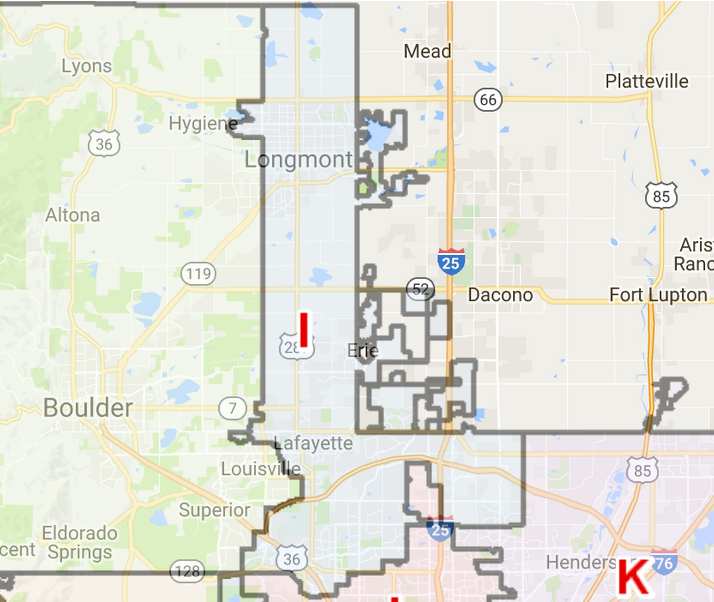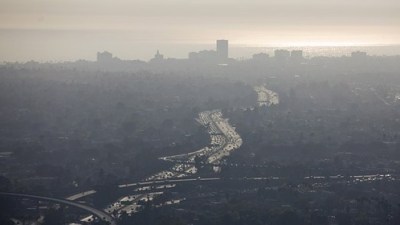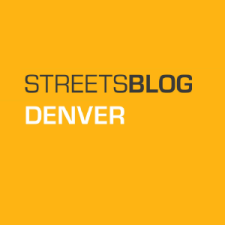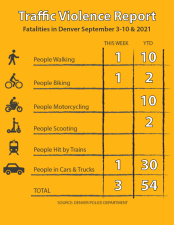Meet RTD District I Candidate Lee Kemp, a Veteran of Transit
Even people who use Denver’s transit system daily might be surprised to find out that a publicly elected board of directors oversees the Regional Transportation District. It’s true.
The 15-member RTD Board of Directors reps constituents from all over the map, literally, and makes decisions that affect Coloradans — in some ways more directly than the president. Eight seats are up for grabs this November 8.
Streetsblog wants you to be informed when you decide who fills those seats, so we’ve been publishing interviews with candidates leading up to Election Day. (Hat tip to Transit Alliance for the footage from a closed candidate forum last month.)
Next up: Lee Kemp. Kemp, who once chaired the board for five years, is running to represent District I, which covers Lafayette and parts of Broomfield, Erie, Longmont, unincorporated Adams County, and Boulder County. His opponents are Véronique Bellamy and Judy Lubow.
- Most used RTD route: 120x and SkyRide (owns a car)
- Day job: Regional vice president of Motor Coach Industries
- Lives in: Willow Park, Broomfield
- Website
Why are you running?
I came to Colorado in 1976 out of the Army, had just come back from overseas. There was this big company advertising that it was hiring people, and it was this place called RTD. Because I was a Vietnam vet, I got 10 preference points and was hired on the spot as a body shop helper mechanic. I worked up through their management training program and then went into the private sector, then ended up becoming chairman of the RTD board.
But why are you running?
Because right now, where we are with FasTracks, we are about 80-plus percent done, but the area that’s not done is mostly in the northwest area. I want to help facilitate seeing what we can do to either set some priorities on getting it done, or set some new expectations so at least the people up here in the northwest area can have some type of comfort level that the money they’ve been spending since they voted for it is gonna help it get it completed — or at least other options to help assure that we get some type of good transportation system in the northwest area.
Are you open to options other than rail, like bus rapid transit?
I’m open to both. We’re not re-engaging the communities and stakeholders up here — gathering them and saying, here’s the new forecast on when the original project is supposed to be done. Are there other things that we can do, or do we want to stay steadfast and get this completed? What is it we want to get done here? I’m open to any ideas — good ideas.

Do you think it is RTD’s responsibility to grow ridership?
Well I think they’re a part of that, but I think it’s the communities that need to push for ridership. If you’re gonna have a good, sustainable community, public transportation is gonna be one of the elements that you need to be promoting to be able to get your residents on those alternative modes of transportation, instead of just depending on your household car.
Don’t get me wrong. I think if you want a car you should own a car, but it should be just one of the tools in the toolbox. You should have all other kinds of modes to be able to make it a sustainable community. And it takes everybody, not just RTD.
How can RTD improve its system?
I speak more for the rural areas because that’s what I represent, so it’s always expansion. If you’re going to entice people as sprawl happens, you want to try to control it as much as possible. In that development stage, you want to ask, how can we have some density here? What’s it gonna take to get people to live in a more dense area? Well, if we had 10 minute frequencies on buses that came through, I think we could really fulfill that need. Those are the types of questions that need to come up.
A good example was the T-REX project. Instead of just building extra lanes, they cut back an extra lane and allowed right of way for the light rail to go down I-25. And that fit in there really nice. That grew ridership a whole lot. You have to manage your assets. Buses aren’t the answer to all, rail isn’t the answer to all. There’s bicycles, uber, call-and-rides, vanpools. You have to have all these people together, seeing how all these modes will help fit into the communities that you’re trying to grow.
Why should people vote for you?
Because I’ve been in transportation for 41 years.
How does that translate to this elected policy position?
Well I’ve always been a promoter of leading edge technology, not bleeding edge technology. And I feel that I bring to the board, when opportunities come to us, being able to take a look at it and give my recommendation. I would be able to identify leading edge tech, which I think is viable for us to adopt and move our transit system into the next generation.
Are RTD’s fares affordable?
If you look across the country, I would say we’re about the 60 percentile. There are 40 percent of agencies that are probably better. I think where we can do a little better job is in our EcoPass program, particularly neighborhood passes and business passes. We need to try to offer some type of fare structure that allows larger groups to take advantage of and also be very sensitive to our transit-dependent people, and make sure that there’s a fare structure in place that allows them the ability to us public transportation. I think it’s fair what we have, but that’s something that’s always moving.
What do you have over your opponents?
I don’t like talking about anybody, really, but the only qualifications I’ve heard from Veronique [Bellamy] is that she’s a bus rider. Don’t get me wrong — being a bus rider is very important. After all, that’s why RTD is here. She’s never said anything about looking at different ways of financing, and getting things done. The only thing I’ve heard her say other than she is a bus rider is, I am going to definitely do away with public-private partnerships. That’s, to me, very closed minded. I’m not saying public-private partnerships work in every instance, but once again, they’re another tool in the toolbox that has to be looked at.
When I termed out, I supported Judy [Lubow] in being able to get on the board. It’s just that I haven’t seen the drive or the fortitude to help really push forward new ideas and work collaboratively with the board to say, here’s why we need to to something for the northwest area. It takes nine votes to push something forward, and I haven’t seen where that collaboration has taken place with other board members. You can say all you want about what you want done, but if you don’t know how to get it done, it’s never gonna happen.
So how do you get things done?
Working each and every director. Sitting down with them and saying, look, this is what I need to reach my goal in my area. I need your individual support on being able to get that done. And then seeing what they need to get done, because it’s a two-way street. But you’ve got to work each and every member of the board and say, collaboratively, how are we gonna keep pushing things forward?
I spent five years heading the RTD board — the longest sitting chair of RTD — and when the country had our economic meltdown, I was able to work with the board and push forward to reach consensus more than 90 percent of everything that came to the board for action, get it passed.


